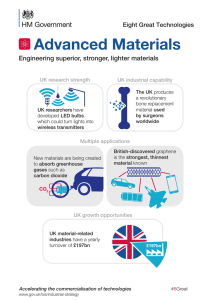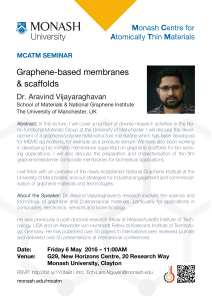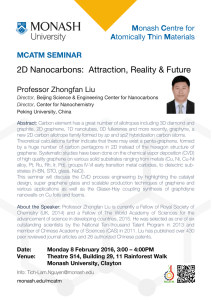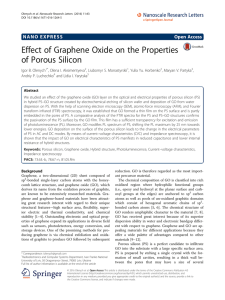S3.3 Xinliang Feng Graphene and 2D Nanohybrids: New Generation of Materials for
advertisement
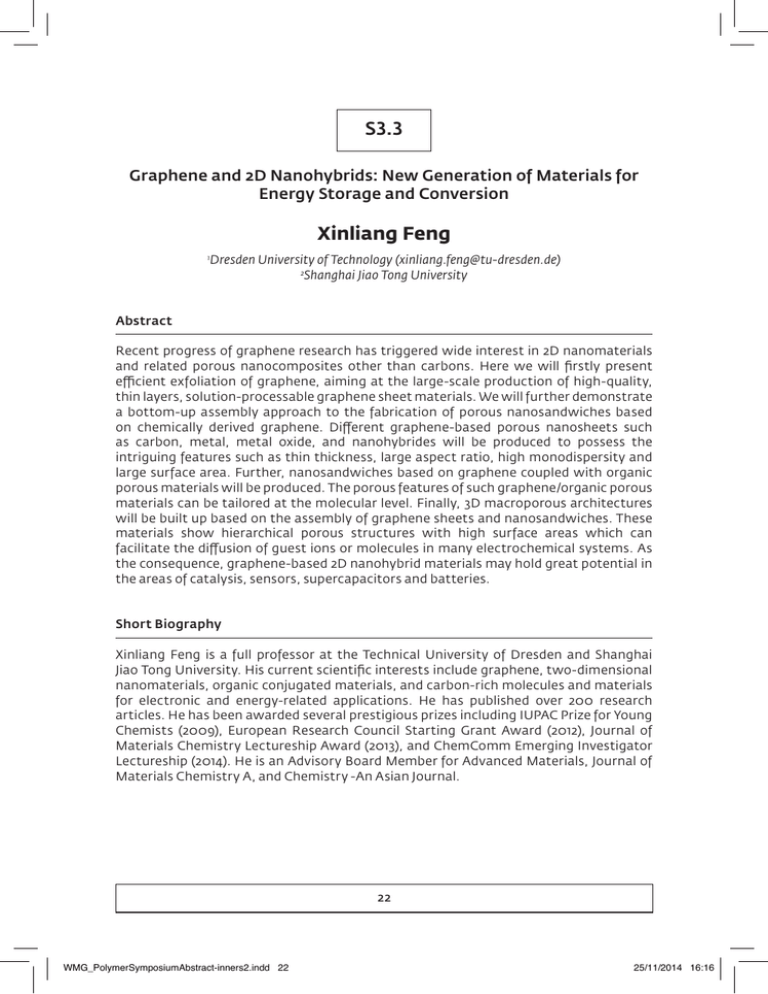
S3.3 Graphene and 2D Nanohybrids: New Generation of Materials for Energy Storage and Conversion Xinliang Feng 1 Dresden University of Technology (xinliang.feng@tu-dresden.de) 2 Shanghai Jiao Tong University Abstract Recent progress of graphene research has triggered wide interest in 2D nanomaterials and related porous nanocomposites other than carbons. Here we will firstly present efficient exfoliation of graphene, aiming at the large-scale production of high-quality, thin layers, solution-processable graphene sheet materials. We will further demonstrate a bottom-up assembly approach to the fabrication of porous nanosandwiches based on chemically derived graphene. Different graphene-based porous nanosheets such as carbon, metal, metal oxide, and nanohybrides will be produced to possess the intriguing features such as thin thickness, large aspect ratio, high monodispersity and large surface area. Further, nanosandwiches based on graphene coupled with organic porous materials will be produced. The porous features of such graphene/organic porous materials can be tailored at the molecular level. Finally, 3D macroporous architectures will be built up based on the assembly of graphene sheets and nanosandwiches. These materials show hierarchical porous structures with high surface areas which can facilitate the diffusion of guest ions or molecules in many electrochemical systems. As the consequence, graphene-based 2D nanohybrid materials may hold great potential in the areas of catalysis, sensors, supercapacitors and batteries. Short Biography Xinliang Feng is a full professor at the Technical University of Dresden and Shanghai Jiao Tong University. His current scientific interests include graphene, two-dimensional nanomaterials, organic conjugated materials, and carbon-rich molecules and materials for electronic and energy-related applications. He has published over 200 research articles. He has been awarded several prestigious prizes including IUPAC Prize for Young Chemists (2009), European Research Council Starting Grant Award (2012), Journal of Materials Chemistry Lectureship Award (2013), and ChemComm Emerging Investigator Lectureship (2014). He is an Advisory Board Member for Advanced Materials, Journal of Materials Chemistry A, and Chemistry -An Asian Journal. 22 WMG_PolymerSymposiumAbstract-inners2.indd 22 25/11/2014 16:16


